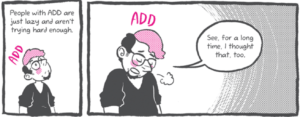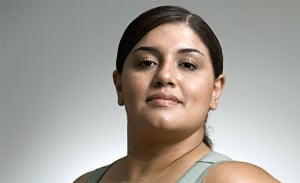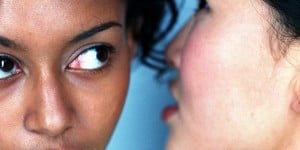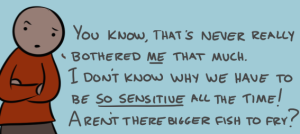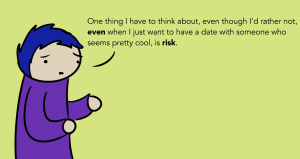Originally published on Adios Barbie and cross-posted here with permission.

Credit: Health Watch Center
Eating disorders are everywhere, and finally, people are beginning to realize it. Unfortunately, with the increased awareness has come a rash of myths, both about the disorders themselves and the people who suffer.
Since food and body are already weighted subjects (excuse the pun!) in Western society, it can be hard to speak up against this type of ignorance, and especially for someone who is currently struggling.
That’s why I decided, as soon as I was far enough in my own recovery, that I would take it upon myself to fight these myths–in hand-to-hand combat, if need be.
The Myth: Eating disorders are about food.
The Facts: Eating disorders are complex mental illnesses, with a wide range of psychological, sociological, and physiological factors. Simply “eating right” will not cure an eating disorder. I’ve been told more times than I can count that I should just eat right and exercise in moderation.
It’s not that simple, because these are the symptomatic behaviors, not to be confused with the core issues causing them.
The Myth: Eating disorders are a women’s problem.
The Facts: 1 out of every 10 people suffering from an eating disorder is male, but even these numbers may be artificially low. Traditional gender roles can cloud the issue, and doctors might more readily diagnose women and gay men.
Current statistics indicate that the homosexual male population has the highest percentage of eating disorders, over straight females.
The Myth: Eating disorders are just a phase.
The Facts: An eating disorder is a serious disease, but one which does respond to treatment. More people die of eating disorders than suicide, or any other mental illness. As many as one quarter of those diagnosed with anorexia nervosa will die from it.
The good news is, treatment reduces the mortality rate significantly to only about 4%. Unfortunately, believing this myth may cause eating disordered people to avoid seeking the help they need.
The Myth: Eating disorders are for teenagers.
The Facts: Although 86% of eating disorder diagnoses occur in people under the age of 20, anyone can be affected. There is a disturbing rise in the incidence of eating disorders among middle-aged and post-menopausal women, which researchers compare to the classic male mid-life crisis.
Gender roles make disordered eating a more acceptable outlet for women’s feelings about empty-nest syndrome, a stagnated career, or simply getting older.
The Myth: Eating disordered people are all skinny/fat.
The Facts: 70% of women with eating disorders are at or above what is considered a “healthy” weight. But weight is just a number, and as such, it doesn’t tell the whole story. Part of what makes eating disorders so dangerous is that most of the damage is internal.
To ignore disordered behaviors because a person looks “ok” is extremely dangerous, but to assume all fat or thin people have disordered eating would be equally wrong. In the end, it is the behaviors and thoughts that tell the truth of the matter.
Just like eating disorders themselves, eating disorder myths are everywhere. These are only five of the most common I’ve come across, but the list goes on and on.
What eating disorder myths have you come across, and how do you fight them?
Maddie Rudd is a former freelance writer, currently holding the position of Community Manager at HubPages, a popular writing site. As an eating disorder and sexual assault survivor, she brings together personal experience and diligent research to address issues that face women of all ages. When she’s not writing or managing communities, Maddie enjoys gardening, cooking, and women’s flat track roller derby. She lives with her life partner and rescued dog in Oakland, California.
Search our 3000+ articles!
Read our articles about:
Our online racial justice training
Used by hundreds of universities, non-profits, and businesses.
Click to learn more








